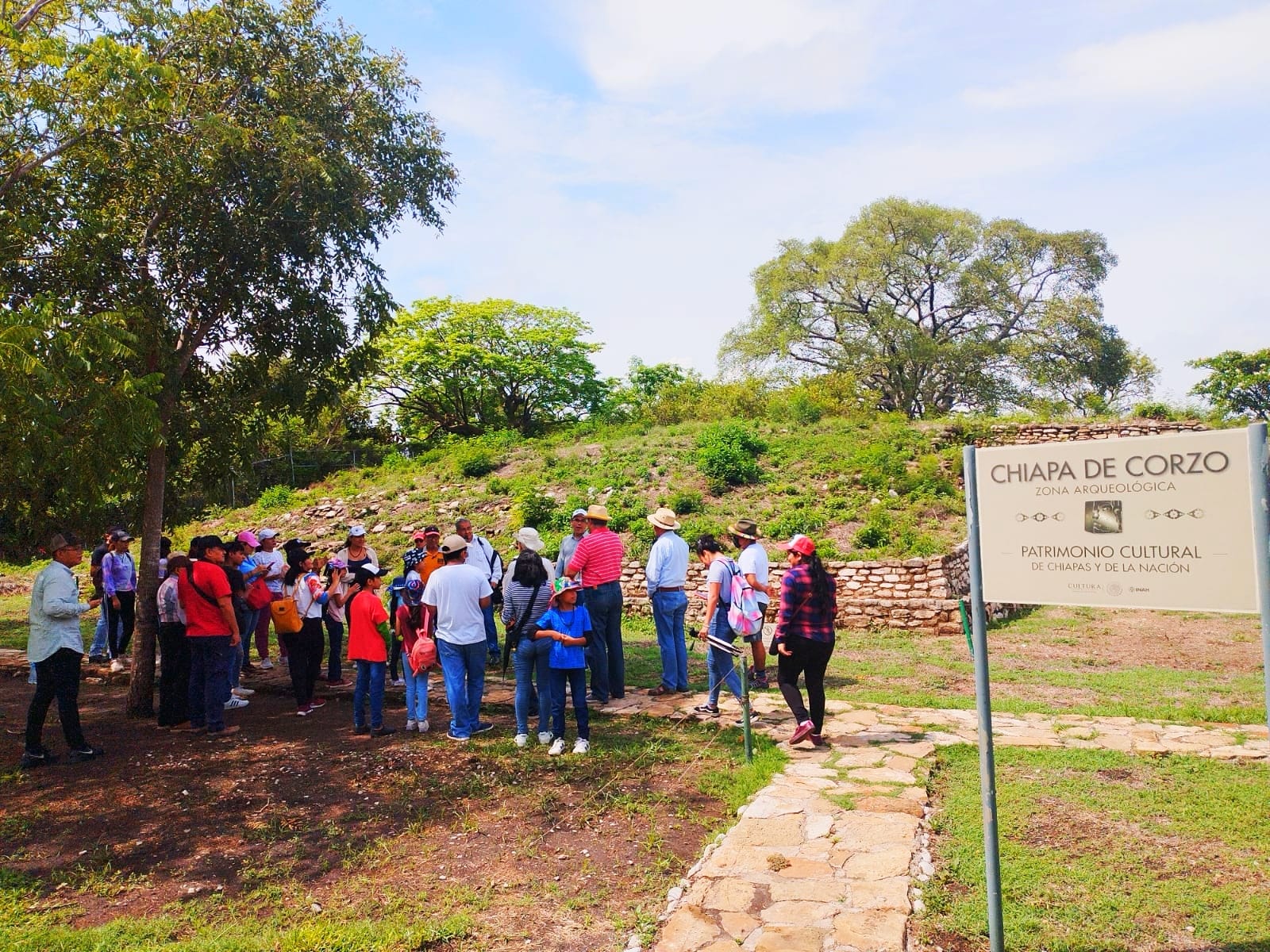Chiapa de Corzo Archaeological Zone
Ancestral Gateway of the Zoque Civilization

On the banks of the majestic Grijalva River, beneath the ground of vibrant Chiapa de Corzo, lie the remnants of an ancient Zoque city — one of the oldest and most powerful in Mesoamerica.
Though its original name has been lost to time, its legacy lives on in ceremonial platforms, earthen mounds, and the memory embedded in the land.
This settlement flourished over 3,000 years ago, becoming a key hub of trade and culture, with connections reaching central Mexico, the Gulf Coast, and the jungles of Petén in Guatemala. At its peak, its buildings were constructed with finely carved stone and lime — a testament to the architectural ingenuity of its people.
The archaeological zone you can visit today features structures such as Mounds 1, 4, 5, 7, 8, 11, and 12 — constructions that were once part of the ceremonial core of this great city. While many structures now lie beneath urban development, what remains offers a window into the splendor of a civilization that left a lasting mark on the history of Chiapas.
The current name Chiapa comes from the Nahuatl language and means “river of the chía,” while the addition “de Corzo” honors the esteemed military and political leader Ángel Albino Corzo. This blend of indigenous and republican heritage makes the city a unique place, where every corner holds a story.
This archaeological site developed between 1250 BCE and 400 CE, reaching its peak during the early centuries of the Common Era. It was a major commercial center, connected to distant regions such as the central Mexican highlands, the Gulf Coast, and Guatemala’s Petén. Its structures, built with finely worked stone and lime plaster, reflect its high level of architectural achievement.
Today, thanks to the work of INAH and the local government, part of the site has been excavated and opened to the public. Visiting it is a chance to walk among the roots of Chiapas and uncover a past that still breathes through its stones and mounds.
It is one of the oldest Mesoamerican settlements with monumental architecture.